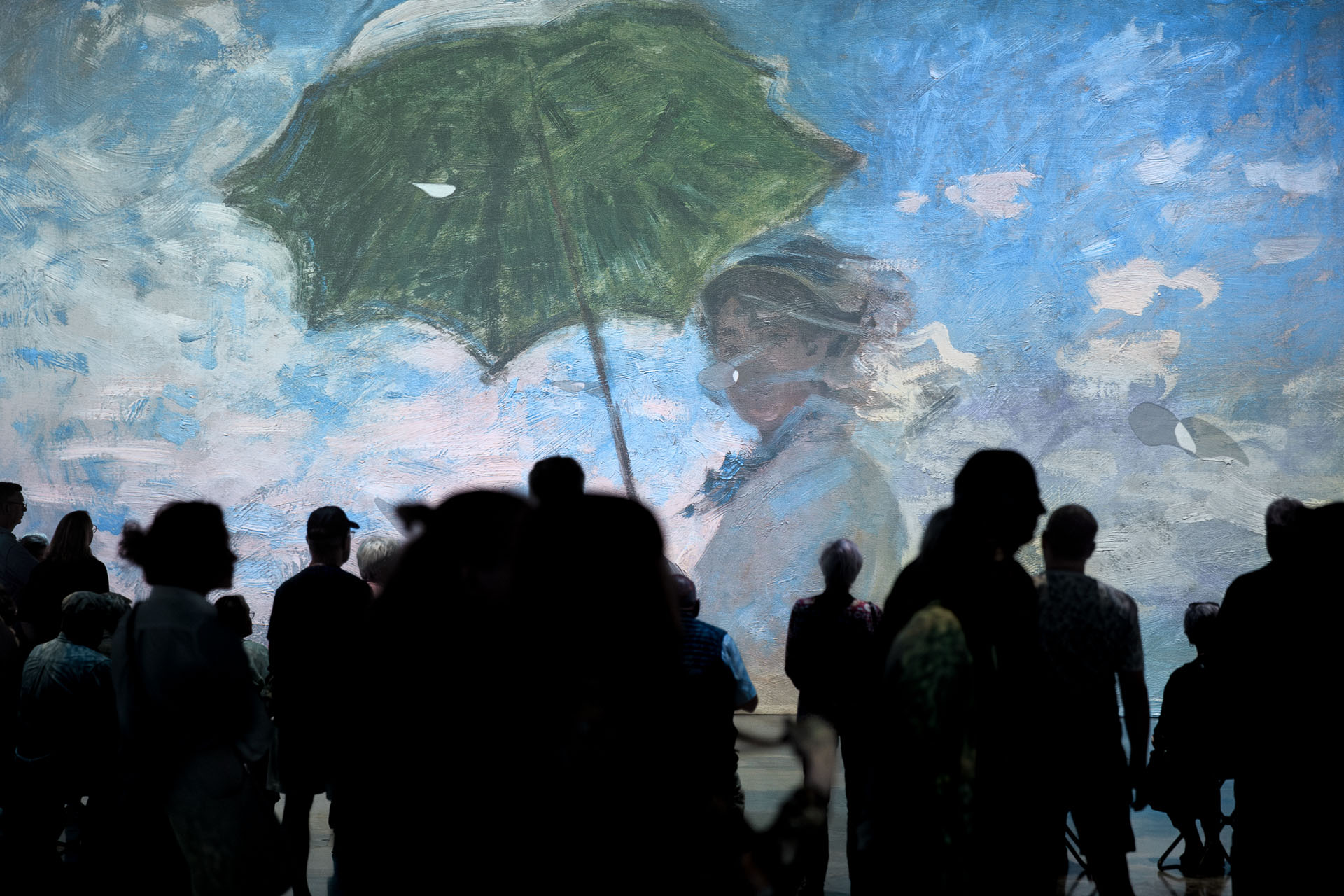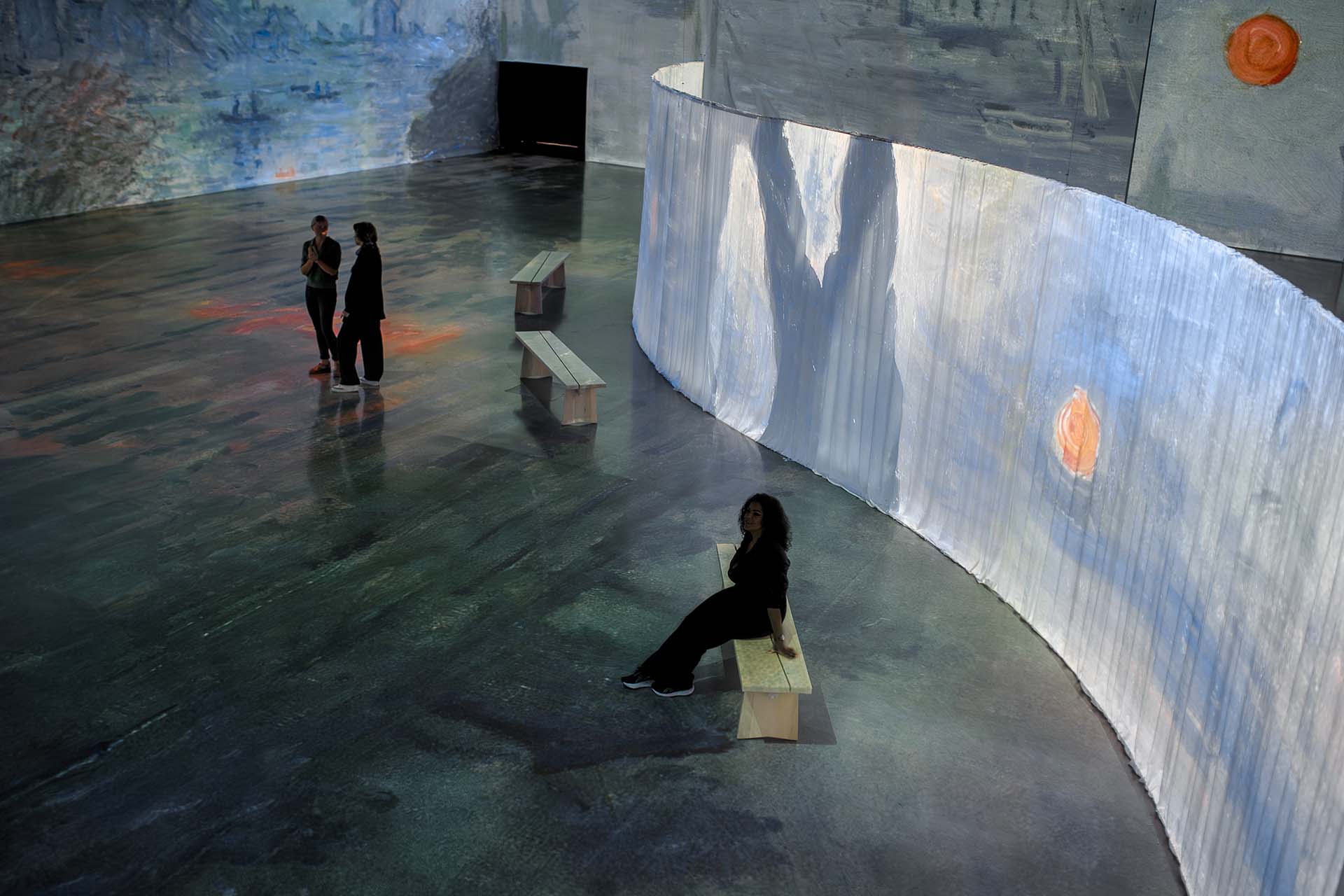& Julien Baron


Imagine Monet is the exhibition created by the French directors Annabelle Mauger and Julien Baron, the world's first directors of a digital immersive exhibition. Imagine Monet starts with the famous painting Impression, Sunrise (1872) and closes with the renowned Water Lilies series (1914-1926). This experience features over 200 well-known masterpieces by Claude Monet.
360° projections on walls and floor will plunge visitors into a waking dream, thanks to state-of-the-art Image Totale© technology. Imagine Monet is an exhibition that pays tribute to Monet’s art, offering an authentic experience for children and adults, novices and art lovers. The exhibition's creators have conceived a "discovery room" designed as a didactic journey on Claude Monet’s life and work before stepping into the immersive space.

Image Totale© is an innovation based on a know-how aimed at immersing the viewer in a waking dream. Annabelle Mauger and Julien Baron's exhibition Imagine Monet is based on one conviction: the experience must establish a direct, raw relationship between the work and the spectator. Thanks to Image Totale©, Imagine Monet fills the space and viewers are completely immersed in a universe of images, with total freedom to wander and explore their surroundings.

Annabelle Mauger and Julien Baron, the creators of Imagine Monet, are the pioneers of immersive art.
In 2008, Annabelle became the first director of a fully digital immersive exhibition, the first in the world dedicated to Van Gogh. With Julien Baron, her co-director from the start, they created lililillilil in 2017. She is co-manager and artistic director of Imagine exhibitions.
After exploring many facets of the audio-visual world, Julien Baron joined Cathédrale d'Images, the first ever immersive venue, in 2006. In 2008, he co-directed with Annabelle Mauger the world's first immersive exhibition dedicated to Van Gogh. He is now co-manager, designer and technical director of Imagine exhibitions.